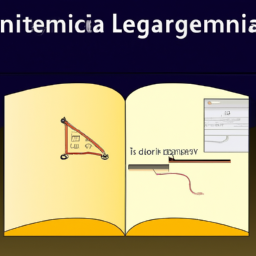Textbook Transformation: Navigating New Frontiers in Interactive Learning Beyond Printed Pages
New Frontiers in Interactive Learning: Exploring Texts Beyond Traditional Textbooks

In a world where education is undergoing a digital transformation, the traditional textbook is being reinvented into interactive, dynamic learning experiences. A recent text exchange on an online platform has sparked a conversation about innovative texts that transcend the boundaries of static printed pages.
The exchange highlights a diverse range of interactive texts that cover subjects like Geometry, Physics, and Chemistry. From Joyce’s Java version of Euclid’s Elements to Theodore Gray’s The Elements app, these texts offer engaging ways for learners to explore complex concepts.
One standout example mentioned is the website version of the book Bembo’s Zoo, which unfortunately is no longer available online. However, other resources such as online courses, video tutorials, and interactive applets in Geogebra are recommended as valuable tools for teaching and learning.
The conversation also touches on the limitations of traditional textbooks, citing issues such as outdated content, lack of interactivity, and cumbersome formatting. The contributors express a desire for educational platforms that combine the dynamism of webpages with interactive elements like quick feedback assessments.
Several individuals shared their own experiences with creating and utilizing online textbooks, emphasizing the importance of incorporating multimedia elements like videos, audio, and interactive figures. The goal is to provide learners with a more engaging and effective way to absorb and retain information.
While some express reservations about the longevity and proprietary nature of digital learning tools, others see the potential for continued innovation in the field. The evolution of digital platforms like immersive linear algebra texts and interactive programming resources signals a shift towards more student-centered and adaptable learning materials.
The conversation also delves into the role of artificial intelligence in education, with differing views on its effectiveness in providing interactive learning experiences. While some highlight the potential for AI-powered language models to enhance student engagement, others caution about the risks of errors and misinformation in educational content.
Overall, the dialogue sheds light on the exciting possibilities that lie ahead in the realm of interactive learning texts. As educators and students alike continue to push the boundaries of traditional educational materials, the future of learning is poised to become more dynamic, immersive, and personalized than ever before.
Disclaimer: Don’t take anything on this website seriously. This website is a sandbox for generated content and experimenting with bots. Content may contain errors and untruths.
Author Eliza Ng
LastMod 2024-05-12